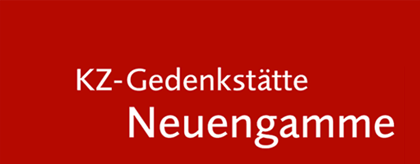Hamburg-Veddel (Women)
In July 1944, the biggest women’s satellite camp of Neuengamme concentration camp in Hamburg was established in a warehouse in Veddel on Dessauer Ufer in the free port of Hamburg. The first 1,000 prisoners – Jewish women from Hungary and Czechoslovakia – had been selected at the Auschwitz-Birkenau extermination camp in early July 1944 to work in Hamburg. They probably reached Hamburg on 6 or 7 July 1944. Around one month later, another 500 Jewish women from the Litzmannstadt ghetto (Łódź) in Poland were sent to Dessauer Ufer via Auschwitz-Birkenau.
Working under the so-called Geilenberg programme – a programme of immediate measures for rescuing Germany’s destroyed petroleum industry – the women were forced to carry out clearance work for large Hamburg refineries such as Rhenania Ossag (Shell), Ebano-Oehler (Esso), J. Schindler and Jung-Öl.
On 13 September 1944, the SS divided the women into three groups and transferred them to the Hamburg-Sasel, Wedel and Hamburg-Neugraben camps.
Period
Beginning of July 1944 to 13 September 1944
Number of Prisoners
1500 Female Prisoners
Kind of Work
Clearance work
Labor on Behalf of
Ebano-Oehler (Esso), J. Schindler, Rhenania Ossag (Shell), Jung-Öl and others
Location
Directions
Former satellite camp:
Lagerhaus G
Dessauer Straße 4
20457 Hamburg
Germany
Mural:
Neumühlen 16–20
22763 Hamburg
Germany
Directions by public transportation:
Lagerhaus G: Veddel urban rail station (S-Bahn).
Mural: From Altona urban rail station (S-Bahn), take bus 112 in the direction of Neumühlen to the “Lawaetzhaus” stop.
Tours: There are regular harbour cruises on the topic of “Satellite Camps, Sites of Resistance and Persecution in the Port of Hamburg”. Information and registration through the Neuengamme Concentration Camp Memorial, Tel.: +49 (0) 40 – 4 28 13 15 27.
Memorial
At the end of 1998, the Hamburg Cultural Authority listed the warehouse as a historic building in light of the fact that it “represents the historical form of storage outside of the Speicherstadt [Hamburg’s warehouse district] with brick architecture which is characteristic of the period”. The interior of the building also remained largely unchanged, and traces of the prisoners could be found in the writing and carvings on the walls, making the building an “important witness to the Third Reich” in the port area.
Two plaques were placed on the outer wall of the building (one in German, one in English) by the Hamburg Cultural Authority as part of its "Sites of Persecution and Resistance 1933-1945" programme to explain the history of the Dessauer Ufer satellite camp. In 2020 two more plaques were installed on the building: one of a private initiative for the commemoration of Gestapo-prisoners from Groningen and the other one of the "Lagerhaus G Heritage Foundation" which commemorates the victims who died of the bombing of the Lagerhaus on 25 October 1944. Since 2021, a sculpture on the theme of forced labour by Carsten Bardehle, based on a design by Ella Nora Sloman, has stood in front of the building.
In 1995, a mural by Cecilia Herrero und Hildegund Schuster entitled “For the Women of Dessauer Ufer” (“Für die Frauen vom Dessauer Ufer”) was unveiled on the banks of the Elbe in Altona at the initiative of the Women in the Museum of Work (Frauen im Museum der Arbeit) group with the support of the Lawaetz Foundation. The original location for the mural had been rejected by Hamburger Hafen- und Lagerhaus AG. In the centre of the mural is Lucille Eichengreen, a Jewish woman born in Hamburg in 1925 who was taken to the Lodz ghetto with her mother and younger sister in October 1941 at the age of 16 and was later deported to Auschwitz. In the summer of 1944, she returned to Hamburg as a concentration camp prisoner to carry out forced labour in her hometown. Together with 500 other prisoners, mostly Jewish women from Poland, she was taken from Dessauer Ufer to the Sasel satellite camp of Neuengamme concentration camp and from there to Bergen-Belsen towards the end of the war. After being liberated, Lucille Eichengreen – whose mother, sister and father had been murdered (her father died at Dachau) – emigrated to the USA.
The mural is part of Hamburg’s “Women’s Open-air Gallery” (FrauenFreiluftGalerie), a programme established in 1994 through which female artists from Hamburg and worldwide seek to portray women’s lives and work from different perspectives and through various artistic methods.
Contact
Sti. LAGERHAUS G Heritage FOUNDATION
Güven Polat
Tel: +(00)1. 6179961842
Email: info@lagerhausg.org
www.lagerhausg.org
Initiative Dessauer Ufer
Email: initiative-dessauer-ufer@riseup.net
https://initiativedessauerufer.noblogs.org/


